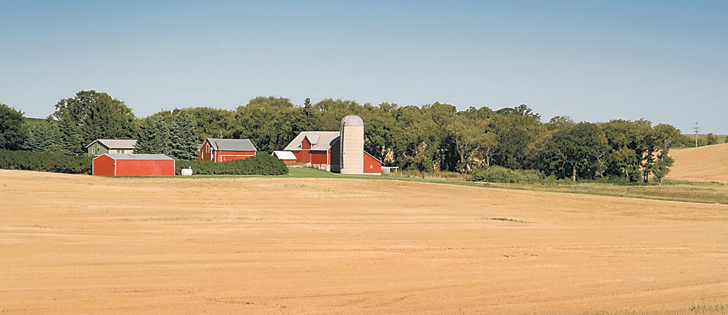Rising on the horizon, emerging from the valley’s floor, peeking out from behind a tree line, the gambrel-roofed red barn is an iconic rural image.
It’s a utility building with an inexpensive linseed- and fungal-resistant iron oxide paint that is burned into the collective memory.
Our culture associates the red barn image with food production and a healthy rural environment.
One of the most powerful branding images on the continent, the gambrel-roofed barn silhouette has been associated with nearly every food type. Red, on barns of all designs, is the colour of farming, along with green and yellow for John Deere and corn.
Read Also

Proactive approach best bet with looming catastrophes
The Pan-Canadian Action Plan on African swine fever has been developed to avoid the worst case scenario — a total loss ofmarket access.
So strong is this imagined rural world that the red barn has become an anchor around agriculture’s neck.
In most cases, the red barn stopped being a commercially viable farm building about 50 years ago, but in the minds of consumers, the smallest farms are where the most sustainable food comes from, or should come from.
In fact, the rust-clad red barn is the not-so-ugly first cousin to North America’s abandoned rust belt factories, which the non-farming 97 percent of consumers don’t understand.
Would those same consumers want their cars and washing machines made in the carbon belching, greenhouse gas inefficient plants of Gary, Indiana or Detroit, Michigan? The ones that now sit idle, having been replaced by ultra-efficient, cleaner suburban factories where people enjoy higher health standards and working conditions?
Where the products those folks build are less expensive and more sustainable than the ones of previous generations?
Often these new buildings and their surroundings have been subjected to life cycle analysis and carbon footprint reporting — scrutiny the rusty factories and red barns of the past could never pass.
When the same modern standards and production methods are applied to agriculture, the public associates it negatively with terms like factory farming.
Many consumers don’t associate “modern” with safe, sustainable and profitable, but rather as a Dickensian-style sweat shop that lacks a red barn. Most people don’t associate modern, technically advanced farming as being the family businesses that most are.
The pretty red barns weren’t all the story books claimed. Many had poorly designed pens, inefficient feeding systems and illness-inducing airflows, where dry manure was shovelled by hand into the central alley and wheel-barrowed to an outdoor pile in all weather conditions.
They usually had gutters that sent wet wastes to cesspools, which were then pumped onto nearby fields and the manure was free to gas-off methane into the atmosphere.
Changing that red barn message has its dangers. If the myth of the red barn is abandoned with nothing to replace it, the public could decide that no farming is sustainable.
As long as North American agriculture portrays itself as one thing while doing another, it adds to the public’s lack of understanding about the realities of modern farming. That could lead to damaging legislation and market abandonment.
If the agriculture industry is to solve this red barn image problem, producers and other industry players will have to invest in long-term, large-scale marketing strategies that reshape public perceptions.
Bruce Dyck, Barb Glen, Brian MacLeod, D’Arce McMillan and Michael Raine collaborate in the writing of Western Producer editorials.

















